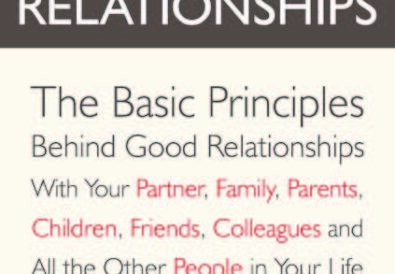The Question Fear Is Really Asking
Each time fear comes, underneath all its bluster, the question it is truly asking is, “Can you see me for what I am? Will you learn to grow strong as a result of our encounter? Are you able to tap into your endless resources, stand up to me, or will you fold?”
If you know how to engage fear wisely, ear can be your friend. But how many of us really hear the unspoken questions fear asks? Do we even realize that we are buckling in one way or another when fear has taken hold?
Although fear is simply a transient energy; it is our resistance to it, our belief in it, which makes it seem important. When you see fear as nothing much, it drifts away.
Living Life in an Orientation of Fear
Fear is not only a feeling, it can become an orientation toward life. An orientation of fear is one of restriction, repression, punishment, guilt, and continual vigilance against being hurt. This can make life a living hell.
Mary saved money for years, hiding it in shoe boxes under her bed. She did not trust the bank, her family, her friends, or herself. She spent very little on herself and always looked haggard. When it came time to give gifts, she didn’t. Everyone assumed she was impoverished.
When Mary died and her fortune was discovered, her entire family was in shock. They said they had no idea she was a rich woman. But in truth, she wasn’t. No matter how much she accumulated in those shoeboxes, Mary led an impoverished life. All of her days were spent in an orientation of fear.
When you live in an orientation of fear, little things upset you. Even during happy times, you are always looking for trouble on the horizon. You may be afraid of being blamed, attacked, or humiliated, or spend your days blaming others, or destiny for the rotten hand you’ve been dealt.
Living in an orientation of fear, you see no reason to behave responsibly or to trust anyone. You, yourself, cannot be trusted. Even in the midst of nourishment and plenty, you are unable to see, taste, or enjoy.
Fear Is A Robber
But it is not other people who are robbing you; it’s your own fear. This fear robs you of clarity, kindness, satisfaction, and plenty. This orientation makes you incredibly rigid, unable to let go and demand that everything proceed as it has in the past. In this state of being, you are constantly swimming against the tide. A tree that is not flexible, that cannot sway in the wind, cracks and breaks.
Catastrophic Expectations
As long as life is a form of dread, it cannot be anything but pain.
Catastrophic expectations arise from an orientation of fear. A catastrophic expectation is the belief or expectation that something awful is going to happen. Sometimes a small difficulty arises and in your mind you immediately blow it up into the beginning of something terrible.
For example, you may have a persistent pain in your body and begin to imagine that it is cancer. Then you begin to wonder how advanced the cancer is. Now that this fearful thought has taken root, the catastrophic expectation grows. Soon you become convinced that no treatment will be helpful now. It may be time to write your will.
When you finally discover that the pain is only a sprained muscle, the news may even come as a letdown. For some, it’s easy to find a distorted pleasure in dwelling upon catastrophe, brings a falsely heightened sense of being alive, because of all the attention you get or the excitement you feel wrestling with danger.
When catastrophic expectations are activated, panic attacks come next. All kinds of relationships can shut down in your life. The more you hold on to negative expectations, the more you believe in them, and the worse the fear becomes.
Exercise: Undoing Catastrophic Expectations
When a catastrophic expectation arises—stop and get a piece of paper. Draw a vertical line in the middle. On the top of one column write, what is actually happening. On the top of the other column write, what could happen.
In the column that lists what is actually happening, be very careful to write down specific facts. For example, “I have a pain in my shoulder. I’ve had it for one day.” In the other column, make a list of all that could happen, including positive outcomes:
As you consciously dream up different expectations, it will become clear to you that they are merely your fantasies. Now go back and check the facts. It’s possible you’ll have a good laugh.
Ask yourself: What is actually happening right now? Can I focus upon what’s actually happening and not what I’m imagining? The choice is yours.
As you continue doing this exercise you’ll realize that it is not the actual event that is causing your fear, but the expectations and fantasies you are dreaming up about it. In this very moment, you can handle whatever is going on. This very moment you are safe, there are endless possibilities, and you can be filled with joy.
Brenda Shoshanna is a psychologist, author, speaker and workshop leader. Her work focuses upon integrating Eastern and Western teachings and practices and making them real in our everyday life. This article is based upon her book Fearless, (The Seven Principles of Peace of Mind). Her blog, TURN THE PAGE, is available at www.turnthepage.live Brenda offers a weekly podcast, Zen Wisdom For Your Everyday Life.




















